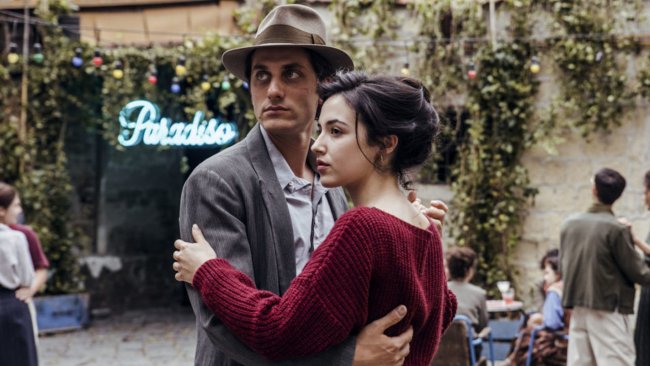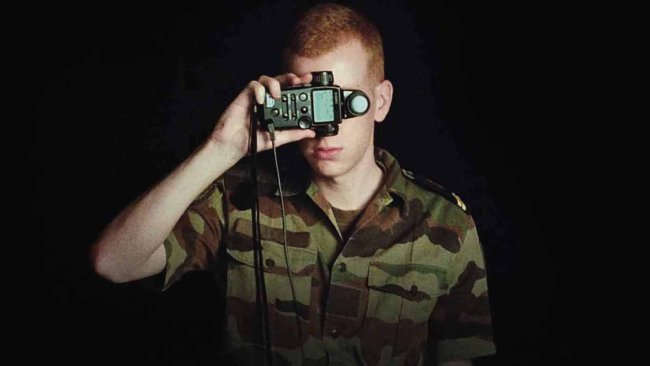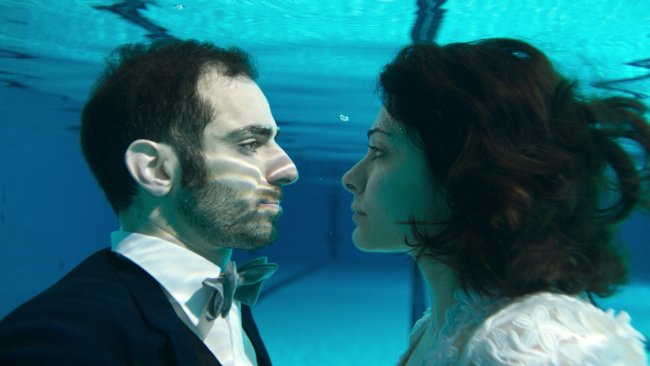Also Known as Jihadi | Eric Baudelaire
[…] Eric Baudelaire chose a minimalist structure for his «Also Known as Jihadi», a documentary film that displays the documents themselves as the main characters.
[…] Thanks to this filmic – fictional – distance, we learn how the background for contemporary terrorism is not necessarily a reality of distress and marginalization. The rigorous anonymity of architecture and landscape expresses only the boring burden of normality.
Here below the Q&A with Eric Baudelaire on his «Also Known as Jihadi» - Sergio Fant, in collaboration with the Art Basel Film Programme
Text: Giuseppe Di Salvatore
Eric Baudelaire chose a minimalist structure for his Also Known as Jihadi, a documentary film that displays the documents themselves as the main characters. Through the official reports of an inquiry, which we read on the screen throughout the entire film, we are acquainted with the story of a French radicalized islamist, Abdel Aziz: his journey to Syria, his network of terrorists, his task of recruiting new fighters in France, his highly suspicious solitary return to France, his arrest. We never see his face. As for the images in the film, Baudelaire delivers only the – mostly urban – landscapes that punctuate Abdel Aziz’ path between France, Egypt, Syria, Spain. We see places and things he could have seen, we are immersed in his superficial geography (this “dispositif” is adopted by Baudelaire after Masao Adachi’s film theory). Also Known as Jihadi appears as a reconstruction of the environment of a Jihadi, from which we are able to learn something about his point of view.
Baudelaire does not try to make this point of view particularly meaningful, and he does not want to convey meaning to us; his attitude, rather, focuses on the intent to be faithful to appearances. Any filmic incursion into a social or psychological reflection would have required superimposing a prejudicial stance on his simple reality. Thanks to this filmic – fictional – distance, we learn how the background for contemporary terrorism is not necessarily a reality of distress and marginalization. The rigorous anonymity of architecture and landscape expresses only the boring burden of normality.
There is a specific boredom that infects the film itself. This boredom notwithstanding it, or perhaps because of it, Also Known as Jihadi is able to develop as film during its projection. The narrative line is limited to our silent reading and the images give us plenty of time to imagine and reflect. The boredom gives us space and time to develop an intimate experience with the geography and aesthetics of what we call terrorism. A more informative, emotional, or explicit filmic story would surely have had the effect of diminishing the uncomfortable empathy we experience through the simplicity of means the film uses.
Thanks to Sergio Fant, programmer at the Locarno Festival (which has collaborated with the Art Basel Film Programme to screen this film in Basel), we had the opportunity to experience a very inspiring Q&A with Eric Baudelaire, available above.
This article contains a third-party video. If you would like to watch the video, please adjust your settings.
Info
Also Known as Jihadi | Film | Eric Baudelaire | FR 2017 | 102' | Art Basel Film Programme
First published: June 26, 2017



